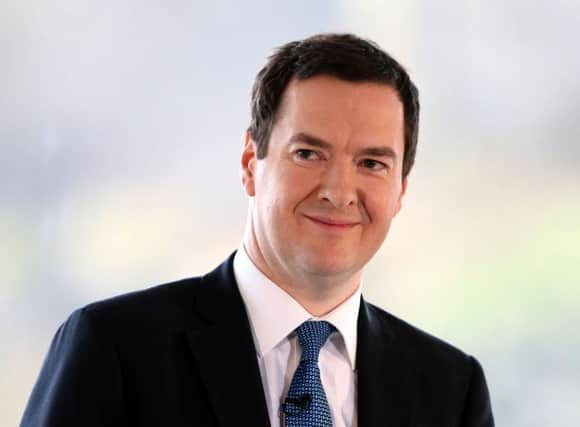Better borrowing but George Osborne debt targets in balance


Net borrowing excluding state-backed banks fell in December to £7.5bn – compared with £11.7bn a year earlier – as tax receipts improved and the government tightened its spending, the Office for National Statistics (ONS) said.
It was a shaft of good news partly overshadowed by other latest ONS data showing that retail sales volumes fell 1 per cent last month after a strong performance in November, the first annual drop since 2009. Clothing was worst-hit.
Advertisement
Hide AdAdvertisement
Hide AdThe public borrowing figure was £10.5bn lower than expected by economists, but it took the overall figure to £74.2bn for the first nine months of the year – well above the Chancellor’s £68.9bn borrowing target for the full fiscal year.
Experts said Osborne will need a huge surplus in January, typically a strong month for revenue, to bring down borrowing sufficiently if he is to avoid overshooting the year-end forecast. In total for the first three months of this year the Government will need a surplus of £5.3 billion to hit its targets.
Capital Economics UK economist Paul Hollingsworth said: “The Chancellor will still find it difficult to meet the Office for Budget Responsibility’s forecast for the fiscal year as a whole. Borrowing still looks likely to overshoot the target this year, possibly by as much as £10bn.”
David Kern, chief economist at the British Chambers of Commerce, said: “After November’s setback, the marked improvement in December makes it likely that public finances will show an overall improvement in the current financial year, and there is a chance that the OBR’s forecast made in the Autumn Statement will be met.
“There is still no room for complacency, and the task ahead remains huge. The weaker financial sector and depleted oil and gas output mean that the UK’s ability to generate tax receipts has experienced a long-term decline, and we must adjust our public spending plans to this reality and do more to boost our tax base.”
Howard Archer, chief UK economist at IHS Global Insight, said the latest public borrowing performance gave Osborne “a fighting chance” of meeting his 2015/16 targets.
Earlier this week, Bank of England governor Mark Carney said policymakers are in no rush to raise interest rates amid a weakened world economy.
A Treasury spokesperson said: “Today’s figures show that borrowing is down compared to last year, as a number of one-off factors that have affected the data in recent months have unwound.
“But there is more to do. At a time when we face a dangerous cocktail of risks from the global economy we must continue to work through our plan to deliver a surplus.”